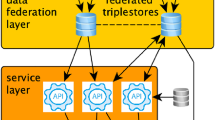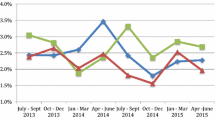Abstract
It is well known in bibliometrics that the average number of citations per paper differs greatly between the various disciplines. The differing citation culture (in particular the different average number of references per paper and thereby the different probability of being cited) is widely seen as the cause of this variation. Based on all Web of Science (WoS) records published in 1990, 1995, 2000, 2005, and 2010 we demonstrate that almost all disciplines show similar numbers of references in the appendices of their papers. Our results suggest that the average citation rate is far more influenced by the extent to which the papers (cited as references) are included in WoS as linked database records. For example, the comparatively low citation rates in the humanities are not at all the result of a lower average number of references per paper but are caused by the low fraction of linked references which refer to papers published in the core journals covered by WoS.


Similar content being viewed by others
Notes
Inferential statistics (e.g., Analysis of Variance, ANOVA) is used in many empirical studies to analyse the statistical significance of group differences. In this study, we do not apply these statistics, because the huge publication numbers lead to statistically significant results despite only small citations differences.
References
Althouse, B. M., West, J. D., & Bergstrom, C. T. (2009). Differences in impact factor across fields and over time. Journal of the American Society for Information Science and Technology, 60(1), 27–34. doi:10.1002/asi.20936.
Bornmann, L., & Daniel, H. D. (2008). What do citation counts measure? A review of studies on citing behavior. Journal of Documentation, 64(1), 45–80. doi:10.1108/00220410810844150.
Garfield, E. (1979). Citation indexing: Its theory and application in science, technology, and humanities. New York: Wiley.
Lancho-Barrantes, B. S., Guerrero-Bote, V. P., & Moya-Anegón, F. (2010). What lies behind the averages and significance of citation indicators in different disciplines? Journal of Information Science, 36(3), 371–382. doi:10.1177/0165551510366077.
Moed, H. F. (2005). Citation analysis in research evaluation. Information science and knowledge measurement, Vol. 9. Dordrecht, The Netherlands: Springer.
Neuhaus, C., Marx, W., & Daniel, H. D. (2009). The publication and citation impact profiles of Angewandte Chemie and the Journal of the American Chemical Society based on the sections of chemical abstracts: A case study on the limitations of the journal impact factor. Journal of the American Society for Information Science and Technology, 60(1), 176–183. doi:10.1002/asi.20960.
Author information
Authors and Affiliations
Corresponding author
Rights and permissions
About this article
Cite this article
Marx, W., Bornmann, L. On the causes of subject-specific citation rates in Web of Science. Scientometrics 102, 1823–1827 (2015). https://doi.org/10.1007/s11192-014-1499-9
Received:
Published:
Issue Date:
DOI: https://doi.org/10.1007/s11192-014-1499-9




